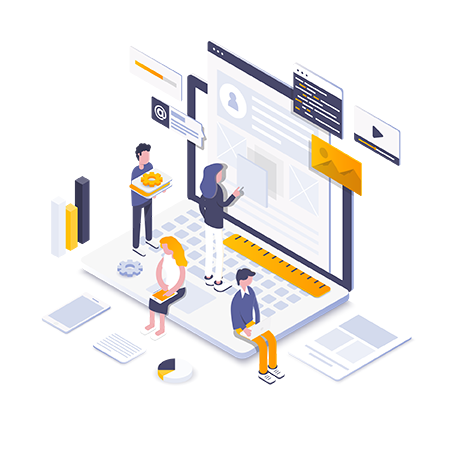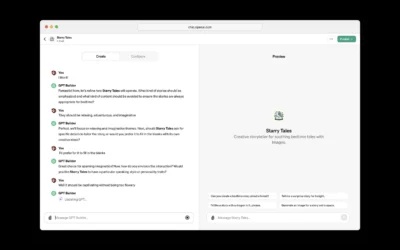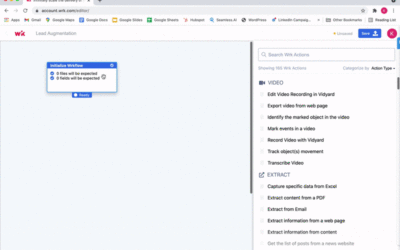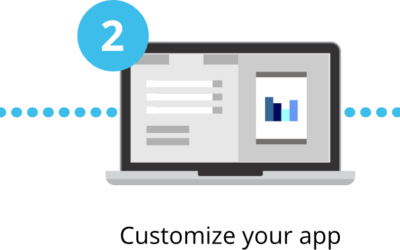How to Build A Website Without Writing Any Code
7 Steps to Building a No Code Website
In this project guide we’ll give you a step-by-step plan that will help you launch a website, even if you don’t know how to write any code. You’ll find the some of these steps are less technical and more about making sure you understand the purpose of your website and what elements of its design should be considered before you start to drag and drop.

Step 1: What is the business purpose of the website?
Step 2: How is the business purpose fulfilled?
Step 3: What does your target audience expect?
Step 4: What are your primary page types?
Step 5: What content needs to be prepared for these pages?
Step 6: Choose your no code website platform.
Step 7: Find an expert to build it faster.
Step 1: What is the business purpose of the website?
If you are going to be spending money on this project, then its best to start with the end in mind and think hard about how this project will pay for itself. For most websites, we would guess that the business purpose could be summarized by the following definition: “Help potential customers learn about our offering and complete some type of transaction.”
The two big variables in that definition are a) our offering and b) type of transaction. Further defining these two variables will give you more clarity for the rest of the project when questions arise about cost, level of effort, and scope of work. We’ll help you do this in Step 2: How is the business purpose fulfilled?
Step 2: How is the business purpose fulfilled?
Now it’s time to think a little bit about user experience, education, and the mode of transaction. The most common path a visitor to your website will take supports their desire to 1) price the transaction, 2) compare the offering, and 3) understand what makes you different. That might seem backwards to you, but nearly every web traffic analysis we’ve performed supports this behavior pattern.
When you put yourself in the shoes of your customer, this starts to make sense. They know what they want and now they are searching for it. The first thing they care about is likely price – so they’ll go to your pricing page. Second, they want to compare that offer to other offers they are finding so you need to give them the basics up front and fast. The third step only matters when you’ve cleared the first two hurdles. Once the visitor understands how your offering and pricing compares to other options they’ve found, then they will spend the time learning more about what makes you different so they can base their purchase decision on other detailed criteria.
To complete this step you should be able to make a list of ideas that support the customers behavior such as: 1) pricing page design ideas, 2) details of our products or services, and 3) main topics about our products or services we need to help our customers understand.
The next step will force you to define your target audience and how they want to price, compare, and understand.
Step 3: What does your target audience expect?
This step builds off of the behavior pattern of your websites visitors and helps you meet their expectations. After they consider a price point, they are going to compare your product to your competitors offerings. If they find something on that website that provides a better experience than your website, then you are at an immediate disadvantage.
Your job is to anticipate the competitors that your audience is going to compare your product or service to and scout their websites for the primary user experience they’ll have there that you’ll want to include in your website. This might be a feature matrix, screenshots of your product, or an on demand set of videos.
Make a list of what they’ll find on other websites, and prioritize what elements of those experiences you want to deliver on your website.
Step 4: What are your primary page types?
Notice that we are not asking you to list the exact number of pages that your website should have. Instead, we are asking you to think through the different type of pages that you’ll need to build. It will be easy to copy, drag, and drop these page types as you build out all of your pages so you don’t need to know the exact number of pages…yet.
Here are some examples of page types you might want to consider, but your website might need other types of pages depending upon your answers to steps 1-3 above:
- Homepage
- Contact Us
- Pricing
- Features
- Demo Request
- About Us
- Solutions
- Products
- Blog Home
- Blog Post
- Landing Page
- Documentation Home
- Documentation Article
Step 5: What content needs to be prepared for these pages?
One of the most challenging aspects of web development regardless of going no code or not is adapting the overall design to the content that needs to be present on a given page. Don’t start to design and build the pages without a firm understanding of the content that you want on that page. You might find that you want to change the content after you see it in the design – but that’s easier to do than changing the design to match the content.
Open up the document you used to map out all of the pages and start writing the copy that you expect to be on those pages. Need help writing copy? Here are a 3 of the best copywriting blogs that can help you get up to speed on what works and what doesn’t.
Step 6: Choose your no code website platform.
The options are growing daily, but now that you are ready to start building you need to choose a platform to build on.
In general, you’ll find that easier tools sacrifice some level of capability or customization. Tools that might take a little bit longer to pick up will give you more flexibility in the functionality and pixel perfect design of your website. There are some rare exceptions that have done a great job at hiding some of the complexity behind higher level building blocks.
Don’t be afraid to pick a tool that looks promising, but also might take some time to learn. We’ll cover getting help from experts in the next step, but the most important factor in building a website without code is in how fast you will be able to change content on your website. You might not need to be a fully trained expert to change certain types of content, and the experts you hire to help you will generally be less expensive than code level programmers.
Step 7: Find an expert to build it faster.
After you try to build it yourself using the no code website builder you chose in Step 6, you might find that you need more practice than expected. Don’t worry, this happens a lot. Think of all of the other software tools you’ve invested time learning. It might make more sense to get the help of an expert to build the first version of the website for you.
When you are working with no code experts make sure to spend enough time talking to them about what parts of the website you expect to change most often. They’ll need to consider how they drag and drop your pages together so that they can more easily set you up with some training around how to change those pages on your own in the future.
You’ll find that no code website experts are generally less expensive than paying a programmer to code a custom website from scratch. At the same time, you shouldn’t expect to compromise too much on the look, feel, or functionality of the website with a no code website builder and expert. Remember that most no code website builders still give you widgets that let you embed some custom code for a very specific use case, or CSS level control that should let your experts change the look and feel to your exact specification.
Related Blog Articles
OpenAI Launches No Code App Store for Agent Building
OpenAI plans to release no code tools so that anybody can build what they call GPT's for their upcoming GPT store. Similar to how the App Store adds value to Apple products, OpenAI's GPT Store will be a way for developers to submit GPTs (think "apps") that enrich the...
Wrk Enters World of No Code Business Process Automation – Executive Perspective with CEO Mo El-Barachi
Business Process Automation vendors continue to fight for differentiation. As large legacy players like Pegasystems grow up to battle Salesforce with CRM-focused enterprise offerings, other vendors are fighting it out with messages meant to attract more specific...
You May Finally Get an App for That – Executive Perspective with Santiago Uribe from AppSheet
While a lot of us have been taking the Apple trademarked slogan (“there’s an app for that”) for granted, some of us have been fighting for the app we really want for a long time. If you are in field services, construction, manufacturing, or other fields where you...
Need help getting started?
We created these guides from our own experience and we are ready to help you.




